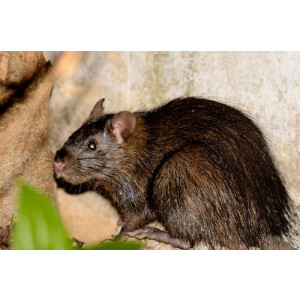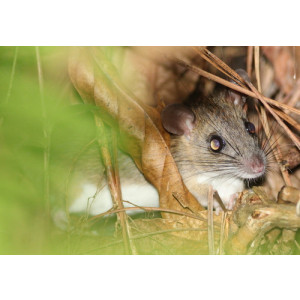@juanvi

Himalayan Field Rat Did you see this animal?
Scientific Name : Rattus nitidus
Family : Muridae
Order : Rodentis
Class : Mammalia
Phylum : Chordata
Habitat : Forest, Shrubland, Grassland
Description : The Himalayan field rat has a stout, cylindrical body that is covered in brown fur. It has small eyes, large ears, and short, powerful legs that are adapted for digging.
Adult Himalayan field rats typically measure around 20-30 cm (8-12 inches) in length, with a tail that adds another 10-15 cm (4-6 inches). They weigh between 100-200 grams (3.5-7 ounces).
These rats are found in the alpine meadows and rocky areas at elevations of 3,000 to 5,500 meters (9,800 to 18,000 feet) above sea level.
Himalayan field rats are fossorial, meaning they spend most of their time underground in burrows that they dig themselves. They are social animals that live in colonies, and they have been known to form cooperative breeding groups.
These rats are herbivores that feed primarily on the roots and tubers of alpine plants.
To survive in the high-altitude environment the Himalayan field rat has a number of adaptations, including a thick fur coat for insulation, an efficient metabolism for conserving energy, and a high tolerance for low oxygen levels.
Adult Himalayan field rats typically measure around 20-30 cm (8-12 inches) in length, with a tail that adds another 10-15 cm (4-6 inches). They weigh between 100-200 grams (3.5-7 ounces).
These rats are found in the alpine meadows and rocky areas at elevations of 3,000 to 5,500 meters (9,800 to 18,000 feet) above sea level.
Himalayan field rats are fossorial, meaning they spend most of their time underground in burrows that they dig themselves. They are social animals that live in colonies, and they have been known to form cooperative breeding groups.
These rats are herbivores that feed primarily on the roots and tubers of alpine plants.
To survive in the high-altitude environment the Himalayan field rat has a number of adaptations, including a thick fur coat for insulation, an efficient metabolism for conserving energy, and a high tolerance for low oxygen levels.
Distribution in Bangladesh
References:
description written by:Asad U. Tanvir,Department of Zoology,Jagannath University,Dhaka; reviewed by:Muntasir Akash,Department of Zoology,University of Dhaka;Taxonomic Checklist:Red List of Bangladesh Volume 2: Mammals, 2015, IUCN; information sources:wikipedia,iucnredlist.org; photo credit:juanvi(www.inaturalist.org/people/mononymous), photo copyright: iNaturalist.more information please contact with us.
description written by:Asad U. Tanvir,Department of Zoology,Jagannath University,Dhaka; reviewed by:Muntasir Akash,Department of Zoology,University of Dhaka;Taxonomic Checklist:Red List of Bangladesh Volume 2: Mammals, 2015, IUCN; information sources:wikipedia,iucnredlist.org; photo credit:juanvi(www.inaturalist.org/people/mononymous), photo copyright: iNaturalist.more information please contact with us.






































